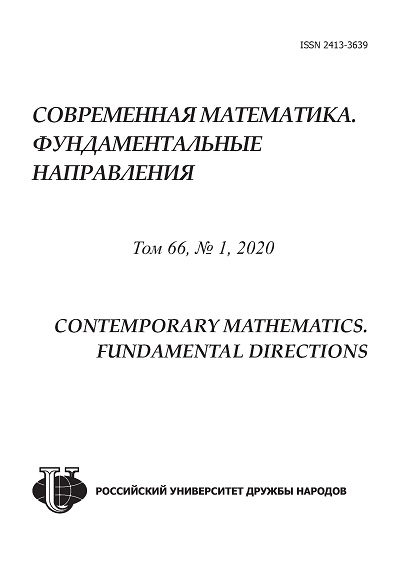Vol 66, No 1 (2020): Partial Differential Equations
- Year: 2020
- Articles: 1
- URL: https://journals.rudn.ru/CMFD/issue/view/1346
- DOI: https://doi.org/10.22363/2413-3639-2020-66-1
Full Issue
New Results
On Large-Time Behavior of Solutions of Parabolic Equations
Abstract
We study the stabilization of solutions of the Cauchy problem for second-order parabolic equations depending on the behavior of the lower-order coefficients of equations at the infinity and on the growth rate of initial functions. We also consider the stabilization of solution of the first boundary-value problem for a parabolic equation without lower-order coefficients depending on the domain Q where the initial function is defined for t =0.
In the first chapter, we study sufficient conditions for uniform in x on a compact K ⊂RN stabilization to zero of the solution of the Cauchy problem with divergent elliptic operator and coefficients independent of t and depending only on x. We consider classes of initial functions:
- bounded in RN,
- with power growth rate at the infinity in RN,
- with exponential order at the infinity.
Using examples, we show that sufficient conditions are sharp and, moreover, do not allow the uniform in RN stabilization to zero of the solution of the Cauchy problem.
In the second chapter, we study the Cauchy problem with elliptic nondivergent operator and coefficients depending on x and t. In different classes of growing initial functions we obtain exact sufficient conditions for stabilization of solutions of the corresponding Cauchy problem uniformly in x on any compact K in RN. We consider examples proving the sharpness of these conditions.
In the third chapter, for the solution of the first boundary-value problem without lower-order terms, we obtain necessary and sufficient conditions of uniform in x on any compact in Q stabilization to zero in terms of the domain RN \ Q where Q is the definitional domain of the initial function for t =0. We establish the power estimate for the rate of stabilization of the solution of the boundary-value problem with bounded initial function in the case where RN \ Q is a cone for t =0.
 1-155
1-155












